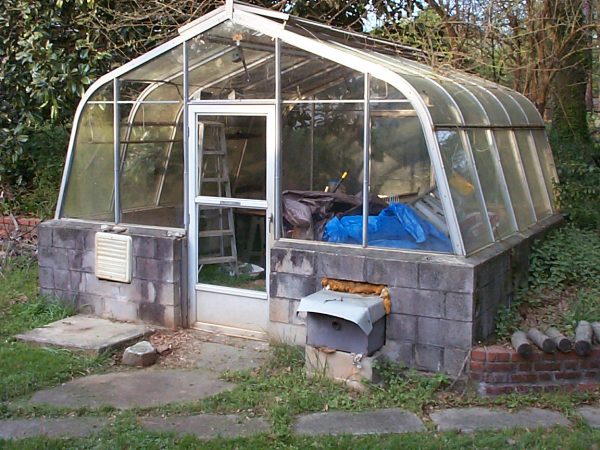Nurseryman’s advice for watering in high heat
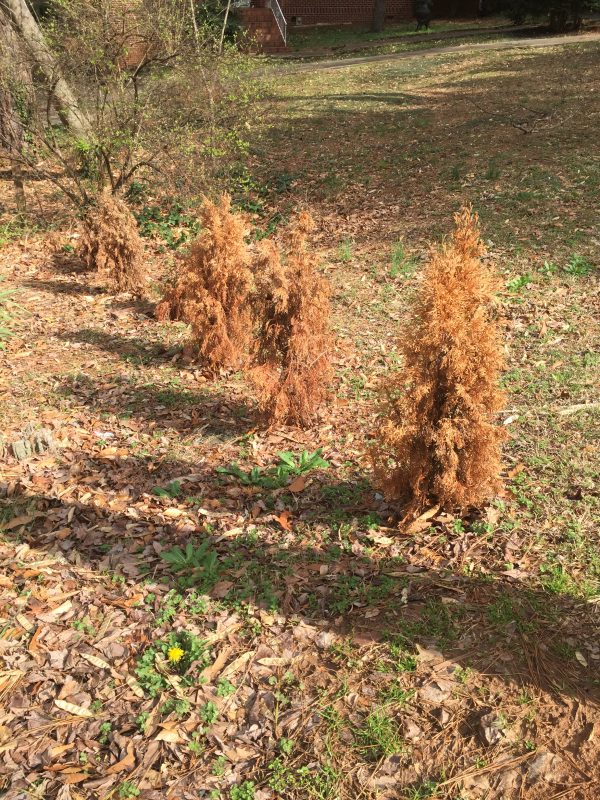
June 17, 2022
Written by Eric Hill, Autumn Hill Nursery
“Looks like we are in a pattern of extremely high heat with very little rain in the forecast. Not the ideal conditions for our plants that are trying to get established.
Before we make suggestions for more efficient watering let’s point out what plants or areas of our yard that may need extra attention.”
Trees, shrubs, and perennials installed last fall or this spring are still getting established and have smaller root systems.
Pay attention to conifers recently planted as they seldom show signs of drying out until it is too late.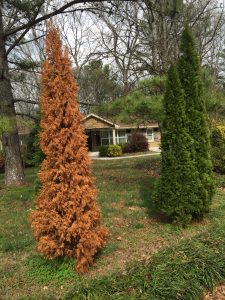
Plants, including well established plants that have large trees in their proximity. These large trees have expansive root systems that are usually shallow and they take up all the available moisture in the area, leaving our shrubs to suffer.
Slopes that are in full sun. When we get these short afternoon showers, the water quickly runs off leaving the slopes as dry as before the rain..
New and established azaleas. Azaleas don’t tolerate long periods of drought near as much as many other shade-loving plants. If they are under canopies of trees, we cannot ignore them.
Here are some tips to help us water more efficiently.
Water in the morning so moisture has a chance to soak in before the heat of the day increases evaporation. If you can’t water in the am, water late afternoon, but early enough for foliage to dry before dark. This helps prevent fungus.
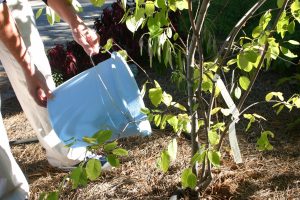 When watering with a hose allow water to slowly trickle on shrubs and trees so moisture can soak in deeper without runoff. A stream the diameter of a pencil or slightly less should do the trick.
When watering with a hose allow water to slowly trickle on shrubs and trees so moisture can soak in deeper without runoff. A stream the diameter of a pencil or slightly less should do the trick.
Water the soil, not the plant whenever possible. This helps avoid disease on many vegetables, roses and popular perennials. It also helps saturate the soil deeper and further out, so the soil stays moist longer.
Pay particular attention to your containers and hanging baskets as they tend to dry out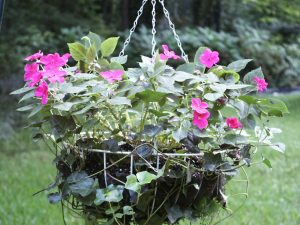 quicker than plants in the ground. Check them daily.
quicker than plants in the ground. Check them daily.
Check before watering as many symptoms of over-watering appear the same as under-watering. Don’t assume, check by burying your finger about 3″ into the soil. If the soil feels moist leave it alone. A moisture meter is a better means to do this.
It is better to water deeper and less frequently than to water for short periods more often.
Keep your beds well mulched.
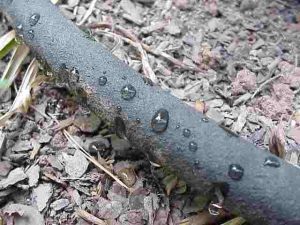 Soaker hoses are a great way to water hedges of evergreens or groups of plants. Loop soaker hoses over the root zone of the plant then on to the next plant as opposed to just running it along one side of a plant or tree. Run hoses for a couple hours twice a week.
Soaker hoses are a great way to water hedges of evergreens or groups of plants. Loop soaker hoses over the root zone of the plant then on to the next plant as opposed to just running it along one side of a plant or tree. Run hoses for a couple hours twice a week.




